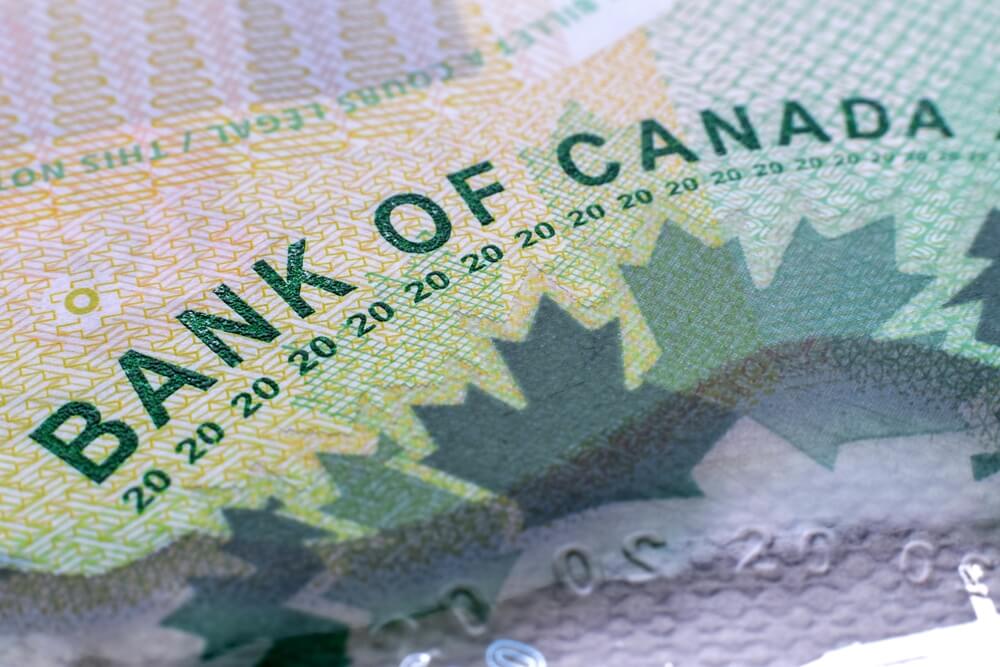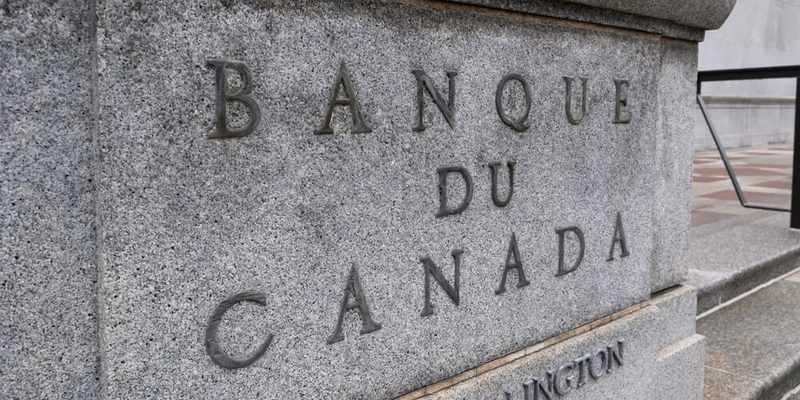
If you are not redirected within 30 seconds, please click here to continue.
Samedi: 10h – 16h HAE

If you are not redirected within 30 seconds, please click here to continue.
If you are not redirected within 30 seconds, please click here to continue.
Canadians’ Usage of E-Commerce and Contactless Payments Up by 23% During COVID-19

During COVID-19, the number of Canadians using e-commerce or contactless payments at least half the time has increased by 23% (from 60% to 74%), according to a national survey conducted by RATESDOTCA.
Seven-in-ten consumers (68%) say they will continue to shop this way at least half the time after the pandemic, suggesting a long-term shift in spending habits and behaviours.
As the country reopens and life becomes more ordinary, some Canadians will pull back and resort to their regular spending habits. However, 8% of consumers say these customs will be the new normal.
Which Canadians are spending more?
Canadians are reworking their budgets. Not only are consumers changing how they are shopping but what they are buying and how much they are spending.
Groceries
Just over half (53%) of consumers saw their average monthly spending on groceries or food delivery increase, with Ontario (60%), Alberta (59%) and British Columbia (57%) out in front.
Canadians spending more on groceries
| Region | Percent of consumers |
|---|---|
| Alberta | 59% |
| British Columbia | 57% |
| Manitoba/Saskatchewan | 46% |
| Ontario | 60% |
| Quebec | 38% |
While 43% of Canadians saw an increase of less than $200, 10% say they are spending $200 or more than they would have before the crisis.
An increase in grocery spending
| Increase in spending | Percent of consumers |
|---|---|
| Less than $50 | 16% |
| $50 to $199 | 27% |
| $200 to $499 | 8% |
| $500 or more | 1% |
| No increase | 45% |
| I don’t know | 3% |
Less than half of Canadians (45%) saw no increase in grocery spending at all.
Technology
Only two-in-ten Canadians (20%) saw their spending increase on technology or connectivity during the pandemic.
An increase in spending on technology or connectivity
| Increase in spending | Percent of consumers |
|---|---|
| Less than $50 | 10% |
| $50 to $199 | 6% |
| $200 to $499 | 3% |
| $500 or more | 1% |
| No increase | 76% |
| I don’t know | 4% |
As the country sent students home and shut the doors on businesses, many Canadians found themselves resorting to online schooling, virtual meetings and digital hangouts. Although many video conferencing apps allow people to use a version of their service for free, this number is unexpectedly low.
Age of consumers who spent more on technology or connectivity
| Increase in spending | Percent of consumers under age 35 | Percent of consumers aged 35+ |
|---|---|---|
| Increased by under $200 | 24% | 13% |
| Less than $50 | 13% | 9% |
| $50 to $199 | 10% | 4% |
| Increased by $200 or more | 7% | 3% |
| $200 to $499 | 6% | 2% |
| $500 or more | 1% | 1% |
| No increase | 64% | 80% |
| I don’t know | 5% | 4% |
Unsurprisingly, the younger tech-savvy generation outspent older Canadians. Eighty percent of older Canadians (35 and over) saw no increase in spending in this category.
Home furnishings and renovations
Canadians are keen on home renovations and at-home projects. Two-in-ten of Canadians (22%) increased their monthly spending on home furnishings, renovations, gardening and the like, especially younger consumers and Quebecers.
Canadians who increased their spending by $200 or more on home upgrades
| Region | Percent of consumers |
|---|---|
| Quebec | 12% |
| Rest of Canada | 6% |
Double the number of Quebecers spent $200 or more on home furnishings or upgrades than the rest of Canada (6%).
Age of Canadians who increased their spending on home upgrades
| Increase in spending | Percent of consumers under age 35 | Percent of consumers aged 35+ |
|---|---|---|
| Increased by under $200 | 20% | 13% |
| Increased by $200 or more | 7% | 8% |
| No Increase | 69% | 76% |
| I don’t know | 4% | 4% |
Younger Canadians (under 35) were nearly twice as likely to increase their spending on home upgrades than those aged 35 and over. Over three-quarters of older Canadians (76% of those aged 35+) saw no increase at all.
Retail
Lastly, 20% of Canadians saw their average monthly spending increase in retail, particularly younger consumers.
An increase in retail spending
| Increase in spending | Percent of consumers under age 35 | Percent of consumers aged 35+ |
|---|---|---|
Increased by under $200 | 24% | 14% |
Less than $50 | 13% | 8% |
$50 to $199 | 11% | 7% |
Increased by $200 or more | 6% | 2% |
$200 to $499 | 5% | 2% |
$500 or more | 1% | <1% |
No Increase | 66% | 80% |
I don’t know | 4% | 4% |
While Canadians aged 35 and over couldn’t be bothered with retail purchases, 80% saw no increases in spending at all.
Further findings
The study also revealed that younger Canadians are more willing to consider getting a new credit card, while older Canadians are more set in their ways. Seventy-one percent of consumers under 35 would consider getting a new card, compared to 49% of those aged 35 and over.
Canadians who would consider getting a new credit card
| Considerations | Percent of consumers under age 35 | Percent of consumers aged 35+ |
|---|---|---|
Would consider getting a new credit card | 71% | 49% |
Would never consider getting a new credit card | 22% | 40% |
When breaking down the details, these are the reasons why Canadians would consider getting a new card.
Reasons for getting a new credit card
| Reasons | Percent of consumers |
|---|---|
An appealing welcome bonus or promotional offer | 28% |
Bank or issuer changes features or forces migration to a new credit card | 20% |
Changes in lifestyle/goals/spending | 11% |
Looking to access more credit | 9% |
Change in employment/income/credit score | 8% |
Recommendation from friends | 6% |
Other | 2% |
I would never consider getting a new credit card | 35% |
I don’t know | 10% |
Although many Canadians have increased their use of e-commerce and contactless payments, and spending in certain areas, only 11% of consumers would consider getting a new credit card because of lifestyle, goal, or spending changes. However, as these new shopping trends emerge, Canadians should evaluate whether their credit cards are offering the best value for their shopping habits.
If Canadians make smart decisions about their payment choices, it could save them money.
Making smart payment choices
Canadian consumers have several payment options; however, only one offers rewards and savings. When cardholders find a credit card that fits their lifestyle, they may be able to reap the most rewards or cashback.
For example, the Best of Finance 2020 winner for the best credit card for families was hands down the President’s Choice Financial® World Elite Mastercard®. The card offers grocery rewards and the power to earn points as a family.
Using the Best of Finance methodology, families can expect to see around $476 back in PC Optimum points in the first year. That is accounting for $2,000 in credit card purchases per month, with $500 on groceries. As Canadians spend more money in the grocery category, they can expect even more rewards.
Under similar circumstances, using a cash back card that offers 1.25% back on all purchases like the SimplyCashTM Card from American Express, families would earn around $375 over that period, significantly less than when using the grocery rewards card.
By breaking down your budget and determining how you are spending money, you can choose the best credit card for your spending behaviours and needs.
Visit the RATESDOTCA credit card marketplace to compare the top credit cards in Canada. Select the type of credit card—travel, cash back or both—whether you are interested in a low-interest rate or perks and if you mind an annual fee. From there, you can sort your top picks by the first-year value, welcome bonus, annual rewards and more.
About the survey
A digital survey of 1,523 working Canadians aged 18 years or older was conducted by Leger Marketing on behalf of RATESDOTCA from June 10 to June 12, 2020, using Leger’s online panel. No margin of error can be associated with a non-probability sample (web panel in this case). However, for comparative purposes, a probability sample of 817 respondents would have a margin of error of ±3.4%, 19 times out of 20.
Related reads:
- Best of Finance Winners: The Best Credit Cards for 2020
- Best Rewards Credit Card in Canada for 2020
- Best No-Fee Credit Card in Canada for 2020
- Best Travel Credit Card in Canada for 2020
- Best Cash Back Credit Card in Canada for 2020
- Best Premium Perks Credit Card in Canada for 2020
- Best Credit Card for Paying Down Your Balance in Canada for 2020
- Best Credit Card for Rebuilding Credit in Canada for 2020
- Best Credit Card for Young Professionals in Canada for 2020
- Best Credit Card for Students in Canada for 2020
- Best Credit Card for Frequent Flyers in Canada for 2020
- Best Credit Card for Snowbirds or Cross-Border Shoppers in Canada for 2020
- Best Credit Card for Newcomers to Canada for 2020
- Best Credit Card for Families in Canada for 2020
Get money-saving tips in your inbox.
Stay on top of personal finance tips from our money experts!










